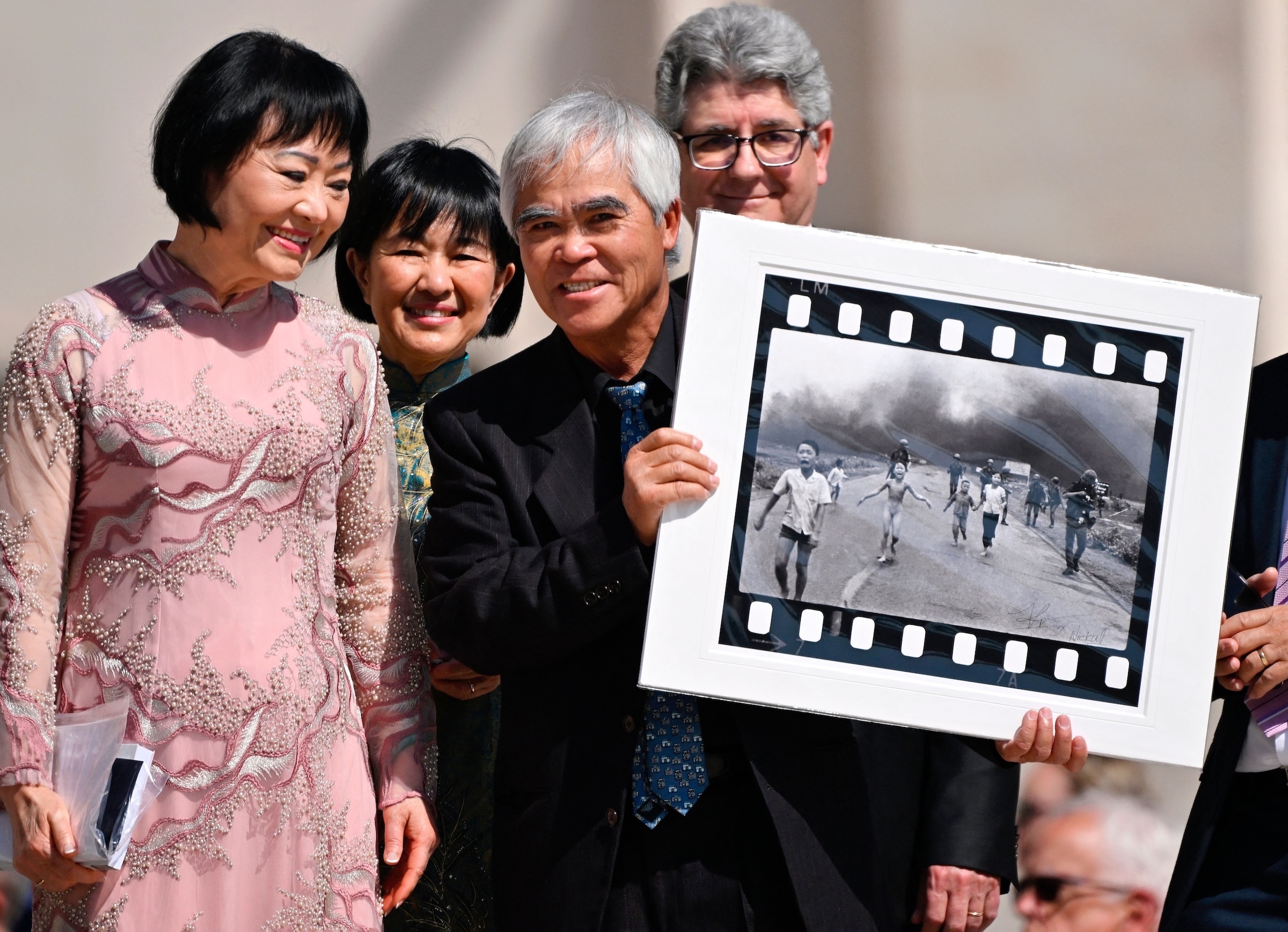It is a photograph etched into the visual canon of the first “television war”: a group of children flee a napalm attack near the town of Trảng Bàng, including a naked nine-year-old girl who charges forward, her skin discolored and peeling after being burned by the deadly weapon.
The June 1972 photograph, officially titled “Terror of War,” has come to serve as a powerful symbol of the brutalities of the war. For over 50 years, the Associated Press has attributed the photograph to Huynh Cong “Nick” Út, who was working out of the news agency’s Saigon bureau at the time of the attack mistakenly carried out by South Vietnamese forces on their own troops and civilians. The photograph, whose main subject is now 62-year-old Phan Thị Kim Phúc, is as decorated as a work of visual journalism can be; in 1973, it won the Pulitzer Prize and was named the World Press Photo of the Year. The year prior, the image ran on the front page of the New York Times.
Today, May 16, however, World Press Photo announced it would no longer credit Út as the image’s photographer after the investigative documentary The Stringer (2025), directed by Bob Nguyen, cast doubts on his authorship. The film, which premiered at Sundance earlier this year, suggested that an overlooked NBC stringer Nguyễn Thành Nghệ captured the image instead.
“While one man was celebrated globally for a photograph that shaped the world’s understanding of the Vietnam War, another lived in silence,” Nguyen, the film’s director, said in a statement today in response to the decision.
In the film, former AP photo editor Carl Robinson, who was responsible for crediting Út, expresses uncertainty over the attribution. Nghệ was a freelance journalist with training as a military photographer who reportedly drove Út on the day the disputed photograph was captured.
An AP spokesperson told Hyperallergic that, according to the agency’s standards, there would need to be “proof and certainty” that Út did not take the photo to alter the credit.
“We have found that it is impossible to prove exactly what happened that day on the road or in the bureau over 50 years ago,” the spokesperson said.
The AP’s ownership of the photo is not in dispute, the spokesperson added, and the choice for World Press Photo to amend their credit is up to them.
Through an analysis of evidence presented in the film and the AP’s investigation of the image, World Press Photo concluded that Nguyễn Thành Nghệ or another photographer, Huỳnh Công Phúc, “may have been better positioned to take the photograph” than Út. According to the organization, 16 individuals were present along Highway 1, where the children ran, including multiple television crews and reporters.
World Press Photo said in its statement today that its staffers reviewed visual material, including film footage of the scene and satellite imagery, which provided insight into the possible location of the photographers at the scene. According to findings from a Paris research group INDEX, which World Press Photo cites, Út was likely standing too far away from the children to have taken the photograph. There are gaps, though, the organization acknowledged, in the evidence necessary to determine definitive proof.
The AP released a 96-page investigation into the photograph last week, in which the agency concluded there was not enough evidence to discredit Út.
In his statement, The Stringer director Nguyen celebrated World Press Photo’s decision.
“It affirms the need to look again at the stories we thought we knew,” Nguyen said. “And it marks a step toward giving Nguyễn Thành Nghệ the recognition he has long deserved.”

